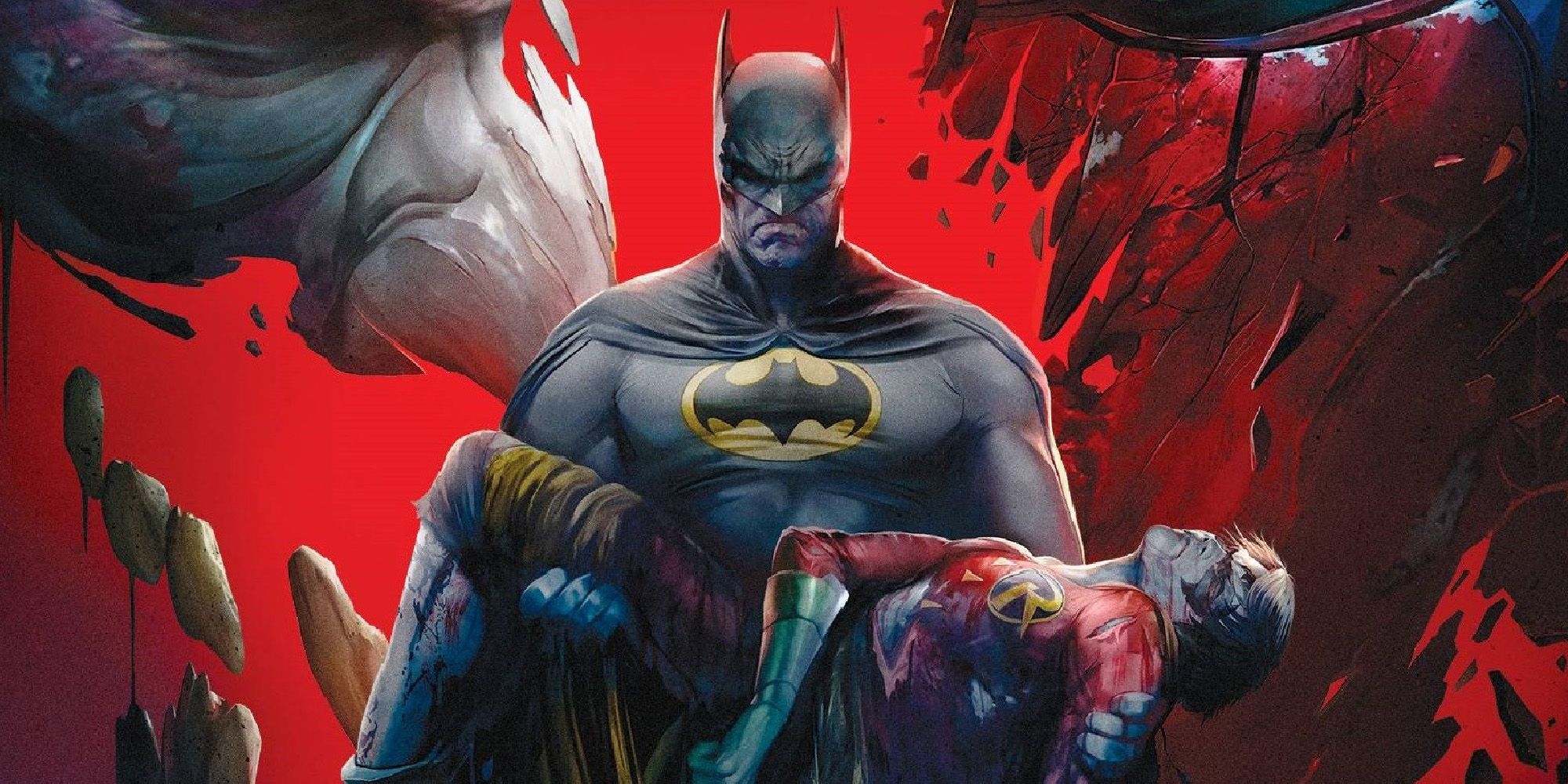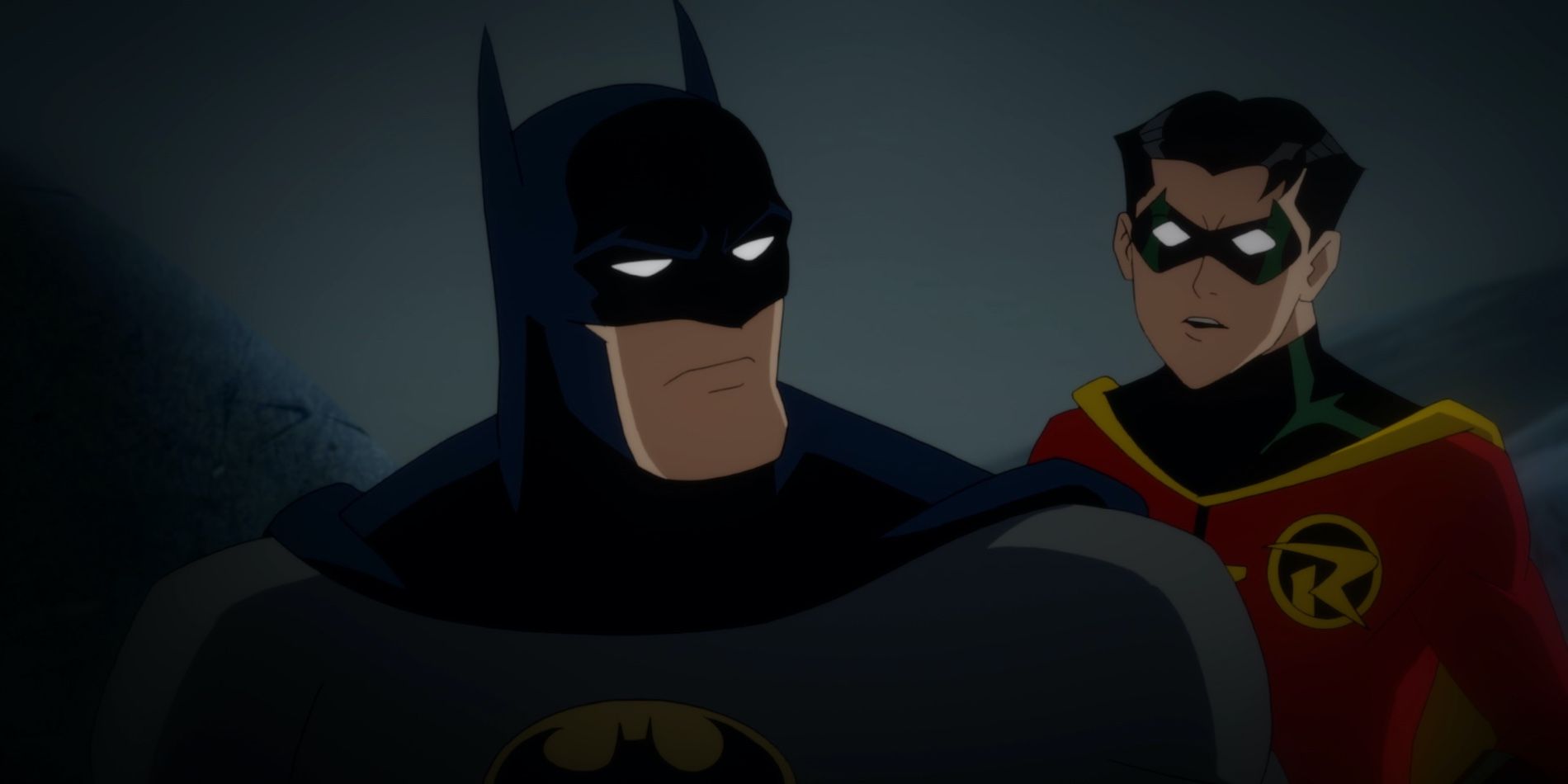WARNING: This article contains SPOILERS for Batman: Death in the Family.
Batman: Death in the Family is an interactive movie that allows the viewer to decide Robin’s fate — but what happens if the Boy Wonder isn’t killed? Based on the 1988 comic book arc of the same name by Jim Starlin and Jim Aparo, Death in the Family’s animated adaptation sees DC venture into the world of interactive fiction with a “choose-your-own-adventure” style rendering of the Batman universe, complete with branching story paths that affect the outcome of the narrative. While seemingly a response to technological advancements and Netflix’s recent experiments with interactive storytelling (Black Mirror: Bandersnatch being their most well-known foray into the medium), Death in the Family’s interactive elements are curiously absent from its digital versions — with the full experience only available on the physical, Blu-ray release.
So, why did DC choose to tackle this particular adaptation in this particular way? Batman: Death in the Family is interactive in a bid to better replicate its source material, albeit with a modern twist. The original comic book run urged readers to vote via two premium phone lines and decide whether Jason Todd/Robin would live or die at the Joker’s hand. With over 10,000 votes cast, it was decided that Todd would be killed off — the character famously disliked by DC’s readership at the time — though he would later return in the celebrated “Under the Hood” story arc during the mid-2000s (later adapted as Batman: Under the Red Hood).
The main thrust of Batman: Death in the Family revolves around that original choice: will Robin (Vincent Martella) live or die? However, instead of just two choices like in the comic book, viewers are able to choose between three different options. Jason is killed by the Joker (John DiMaggio), Jason cheats death, or Jason is saved by Batman (Bruce Greenwood) — each choice resulting in Todd’s transformation into either Red Hood, Hush, or Red Robin. If Todd dies, the story plays out as it did in the comic book; if Todd cheats death, he becomes Hush; and, if Batman saves him, Batman dies instead — with Dick Grayson, the original Robin, taking his place and Todd becoming either Red Hood, Red Robin, or an unbranded criminal. Obviously, there are several branching story paths and each choice will result in a slightly different outcome, narratively-speaking.
Todd’s possible transformation into Hush is a reference to Jeph Loeb and Jim Lee’s “Hush” comic book arc (later adapted as Batman: Hush), wherein Todd was alleged to be the mysterious villain before Hush’s true identity was revealed. Alternatively, the Red Robin transformation is a reference to event-series Countdown to Final Crisis wherein Todd comes face to face with an alternate universe Batman who gifts him the Red Robin suit and is later killed — flipping the Death in the Family narrative, with Todd grieving instead of Bruce Wayne.
These deep-cut references are likely to please comic book fans, with Batman: Death in the Family presenting various “what if?” scenarios that go further than one might initially expect. That said, the interactive elements become frustrating rather quickly — with multiple re-plays and specific choices being required to experience all of the new animation. Instead of contributing to the flow of the story, the interactive options begin to feel like an overly-elaborate menu system, forcing viewers to hunt for new material amid the stuff they’ve already seen. Still, that’s kind of the point, isn’t it? It may not feature decisive storytelling, but Batman: Death in the Family offers an interesting experience that calls back to an important event in DC Comics history.


